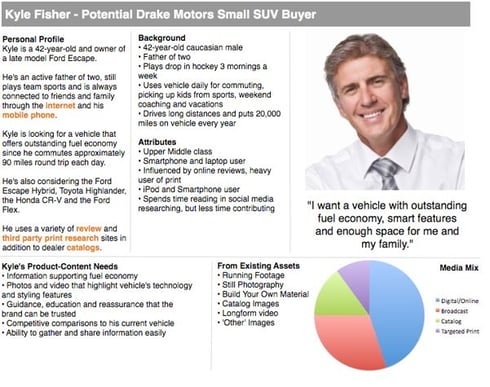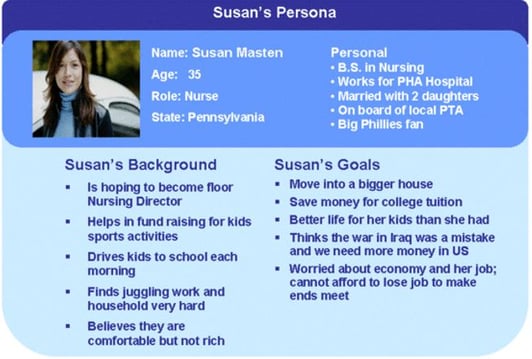Buyer Personas - Who are they and how to create them
January 14, 2020.png?width=800&name=Untitled%20design%20(2).png)
It is common sense in the departments of Marketing and Communication you should know who's your target audience. Whether it's outlining a strategy or putting together a campaign, writing a brochure or post on a social network, it's crucial to keep a question in mind: Who is our Buyer Persona?
All marketing strategy should begin with the definition of buyer persona. These is the path that will allow you to be relevant in your content and guarantee results.
Knowing who this entity is, is key to the success of any marketing and communication action. It is very common to speak in audiences and target audiences, however, this is a vague concept. A target audience defines a group of people like age ranges, areas of interest, among other general traits. A Buyer Persona is a detailed profile of what would be your ideal client, with specific age, dreams, problems, ambitions and first name. It is for this person who your company should communicate.
What is a Buyer Personas?
Buyer personas are semi-fictional representations of your ideal client and should be built based on market research and actual data on your existing clients.
It is clearly a strategic advantage for any business area because, when defining with whom they want to communicate, where they are (online and offline) and what their interests, all their communication becomes much more agile and objective. By having your Buyer personas defined, the choice of the communication channel becomes simpler since you already know where to look for reliable information.
A good definition of Buyer Persona not only makes your communication more agile, but also more effective. It is crucial to establish relationships and initiate personalized conversations with your target audience, and ultimately, whoever manages to generate and maintain these relationships on the basis of trust and authority wins.
How to build my Buyer Personas?
The first step in developing your Buyer Persona is to ask the right questions. Depending on your business area your questions may vary, but there are a number of baseline issues you can always follow:
- Who is my potential client? Name? Age? Genre?
- Where do you work?
- Do you have studies? In what area?
- What are your interests?
- Why are you interested in my brand / product?
- What are your hobbies?
- What kind of content does it consume and where?
- How much do you get per month?
- What are your daily challenges? And what challenges can I help overcome?
- What are the expectations regarding products like mine?
- Who has the most influence on your decision making? In B2B is the decision maker
These questions should not be answered lightly. Of course, if your business is still in its early days, you will have to create some assumptions, but it will do little to invent data and information. Instead, research data, market studies and census. Search for concrete and tested information, and produce your own information through interviews and questionnaires.
When you gather all the information and feel that you have fulfilled all the goals for creating your Buyer Persona, it is time to assemble the pieces and begin your Inbound Marketing strategy.
See the example below:


For better visualization and humanization, you can still assign an avatar to each Buyer Persona.
Once you have all the data necessary to define your Buyer Persona, it will be easier to think about the content strategy for your buyer journey, a strategy that will positively impact your target customer.
Remember: this process has to be collective - involve the various departments. Create an executive group with valid elements to help with this task, set responsibilities for collecting information. If everyone is involved it will be more easy to collect data and all company understand the purpose of a buyer persona.
How will Buyer Personas help with Inbound Marketing?
- In defining content relevant to the audience;
- In the adequacy of the timing and distribution of the contents, in the most appropriate channels;
- In the profitability of information and data collected, to suit the content to the purchase cycle;
- In the definition of voice, style and tone of communication more appropriate.
How to align Buyer People with Buyer's Journey?
The entire process of creating content for each phase of Buyer's Journey becomes easier when we have your well-defined Buyer Personas.
Once you know who the people you are going to communicate to, and what problems he want to solve, you should define what topics and what types of content they will want to consume at each stage of the buying process: Awareness, Consideration and Decision.
Typically, your Buyer Persona is in a phase of Awareness when you have not identified your problem well and are looking for educational content to better define and attack it. In the Consideration phase, you know exactly what the problem is and find solutions to solve it. Finally, you reach the Decision phase when you have identified the best solution / service for your problem and are looking for the best partner / supplier.
How do you know what stage your leads are in? Ideally, you'll already have some demographic and behavioral information about your leads that can give you a good indication of the type of involvement they have with your brand: visited an important page of the website, downloaded an eBook, participated in a webinar, filled out contact request form ...
It is important to define what are the steps, data and / or behaviors that correspond to each phase. From there you can create workflows that will automatically identify where each lead is.
Tip: You can (and should!) Also consider punctuating your leads according to the engagement they demonstrate. Learn more about Lead Scoring.
.png?width=684&height=209&name=YouLead%202024%20-%20Digital%20Growth%20Agency%20branco-laranja%20(1).png)


Deixe aqui o seu comentário | Comments: